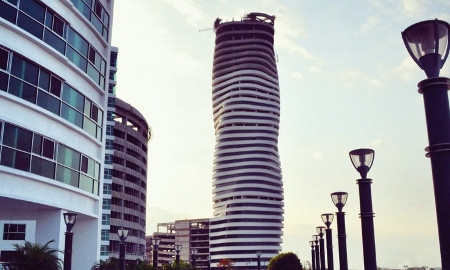Over the span of more than a decade, the Ecuadorian city of Guayaquil transformed into a vibrant, regional economic center, proud of its roots and identity, and respectful of its natural environment. This was made possible thanks to the determination of the Municipality and the smooth cooperation between the public and private sectors.
The new Guayaquil is a vibrant, living and breathing reality. The country’s most populous city and economic hub is putting the cap on what has become an urban regeneration process of which the likes has never been seen before on the American continent.
Said transformation – begun in 2001 – that has made Guayaquil a national and international reference in sustainable development, would not have been possible without the drive of the local authorities.
Through the Malecón Foundation 2000, the City Council of Guayaquil headed by Mayor Jaime Nebot Saadi, invests more than $30 million annually to maintain the project that unites a complete economic, social and environmental renovation.
Malecón 2000 is the new name given to the 2.5-kilometer stretch along the River Guayas and comprises the heart and symbol of the ambitious regeneration project that has transformed the city into a global reference of harmonic growth.
In 2003 the United Nations Development Programme declared Guayaquil a Model City for Development and Governance, and in 2006 the city by its own merit became a Symbol of Ibero-American Progress.
The City Council’s goals are bold: convert Guayaquil into one of the subcontinent’s main economic centers, with tourism as its standard bearer (already the city is the most visited in Ecuador) and to encourage social cohesion in peaceful cooperation with a privileged natural environment.
Through this regeneration project, Guayaquil has managed to transform its urban center, remodel its infrastructure, attract foreign investment and put its priceless heritage and nature to use in benefit of its residents.
“Investment can only be attracted by trust and encouragement. Trust can only come through political and legal stability and Guayaquil certainly lists those among its assets,” says Mayor Nebot.
Moreover, a new port that is being built next to the fishing town of Posorja – just 100 kilometers from Guayaquil – is being called upon to strengthen this Ecuadorian economic capital’s presence in the world, sitting as it does at the crossroads between the Americas, China and Australia.
The additional port will help with the heavy flow of cargo traffic crossing the Panama Canal destined to the continent’s east coast or onward to Africa or Europe. Indeed, this is a pressing need – and not to mention an attractive business opportunity – in a route of such growing strategic importance on a global scale.
Thanks to a daring management model – Guayaquil city council earmarks 89% of its income to investment – Mayor Nebot is successfully surpassing various challenges with an enviable economic growth rate, whilst also raising investor confidence and creating profound citizen satisfaction that makes Guayaquil a model of management and harmonious development for both Latin America and the world.

0 COMMENTS